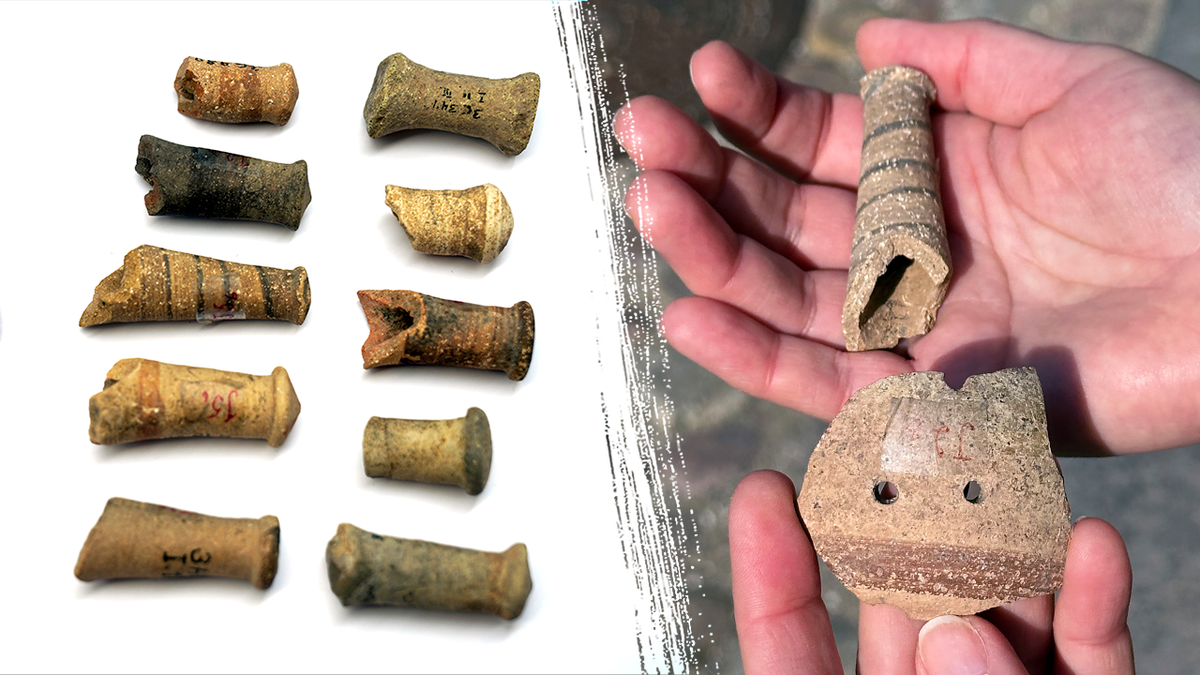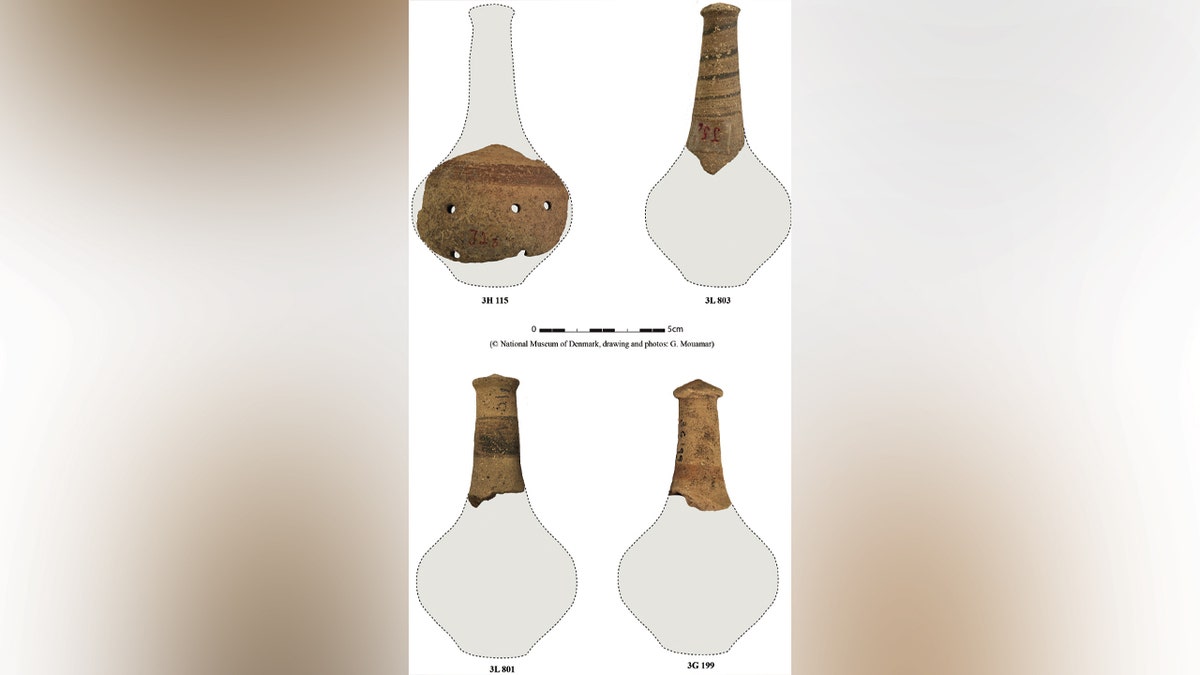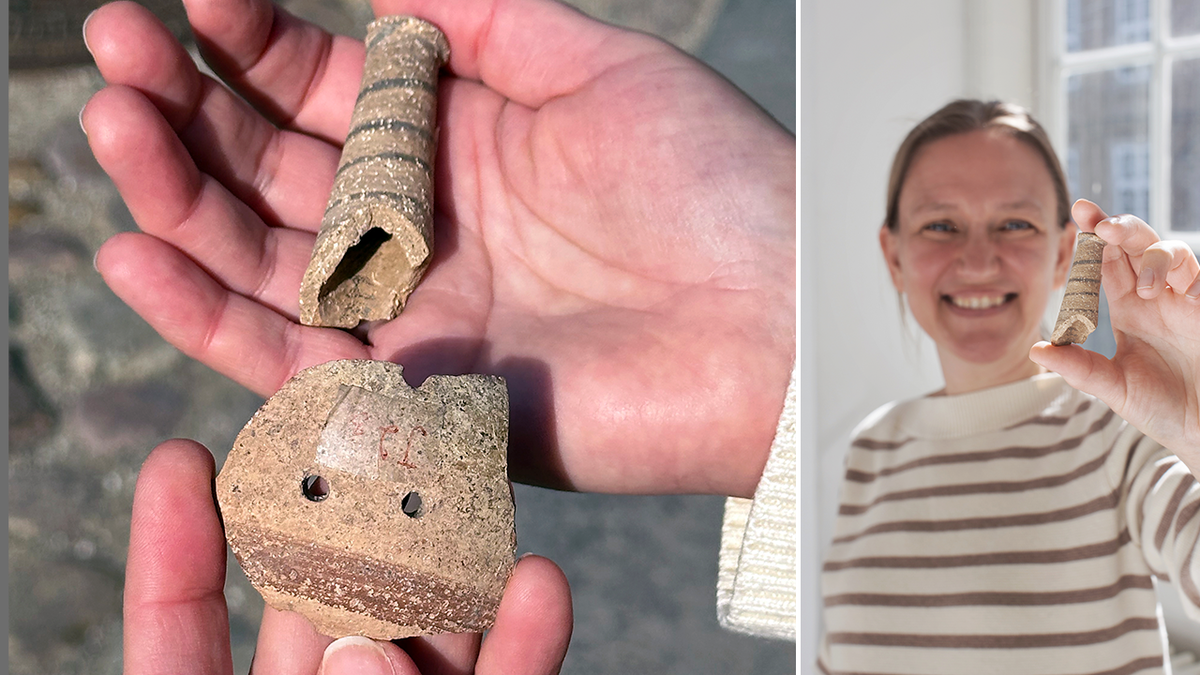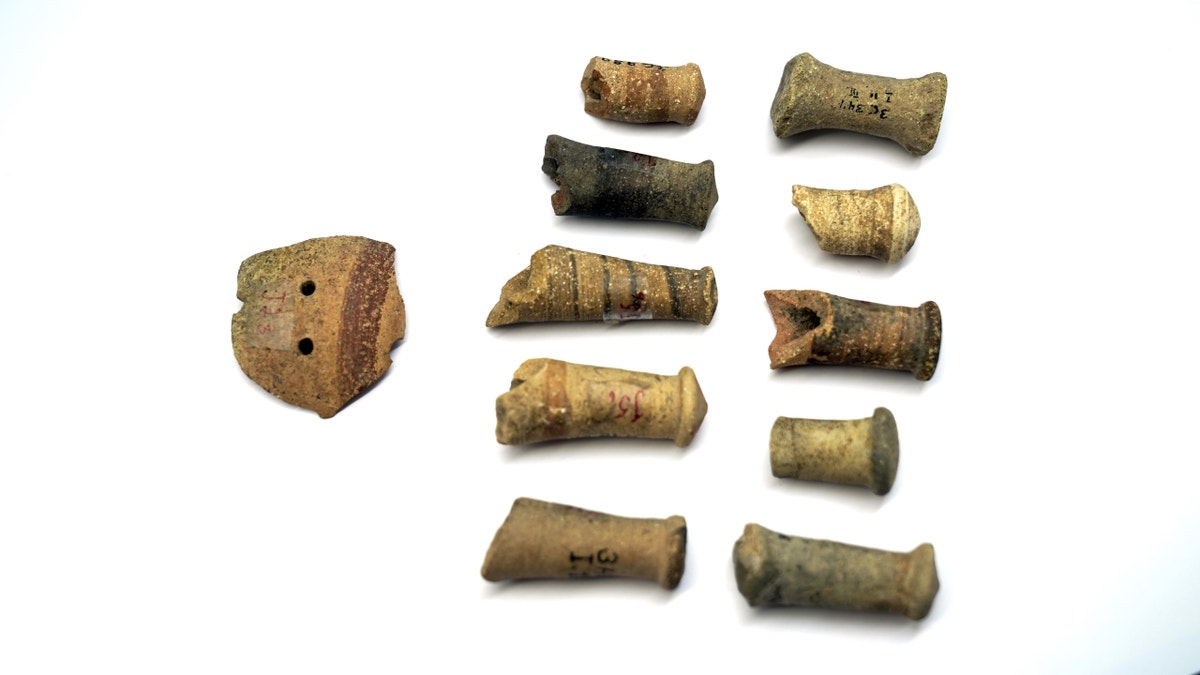

Recent research shows that parents have long looked for ways to keep their children entertained – including during the Bronze Age.
The National Museum of Denmark recently announced the discovery of 4,500-year-old baby rattles from Syria.
The research, which also involved historians from Archéorient CNRS in France and the University of Milan, was recently published in the journal Childhood in the Past.
DEAD SEA SCROLLS COULD BE EVEN OLDER THAN PREVIOUSLY THOUGHT, ACCORDING TO NEW STUDY
In the May 19 press release, the Danish museum said the rattles were mass-produced by professional potters in the ancient city of Hama. A total of 19 rattles were found in a residential quarter of the city, making the discovery the largest of its kind in the Near East.
The rattles contained small pebbles or pieces of clay.

The National Museum of Denmark recently announced the discovery of 4,500-year-old baby rattles from Syria. (John Fhær Engedal Nissen / National Museum of Denmark)
They were made from the same mixture of clay as professionally made pottery in Hama, which suggests the rattles "were part of the potters’ professional range alongside other ceramic wares," the museum said.
"They were probably sold at the market to parents who wanted to entertain – or distract – their children," the press release noted.
"Today, we use screens. Back then, it was rattles."
How do archaeologists know the toys were designed for children? For one, the rattlers make such a low noise it's unlikely that they were used as musical instruments.
Experts also observed that the handles are "very small and not suitable for adults, but they fit exactly into a small child’s hand," the release said.
ARCHAEOLOGISTS EXCAVATE ANCIENT WORKSHOP WITH UNFINISHED SCULPTURES ON GREEK ISLAND
National Museum of Denmark researcher Mette Marie Hald, one of the co-authors of the study, said the material culture of children is often overlooked in archaeology.
"When you find items such as these, the tendency in archaeology has been to interpret them as musical instruments or even cultic objects when, really, they are something much more down-to-earth and relatable such as toys for children," Hald said.

The rattles were crafted by professional potters in the ancient city of Hama. (National Museum of Denmark)
She said that the millennia-old toys aided the sensory and motor development of young ones, just as rattles do today.
"It shows us that parents in the past loved their children and invested in their well-being and their sensorimotor development, just as we do today," she said.
For more Lifestyle articles, visit foxnews.com/lifestyle
"Perhaps parents also needed to distract their children now and then so that they could have a bit of peace and quiet to themselves. Today, we use screens. Back then, it was rattles."
Hald said she hopes the discovery "provide[s] us with a greater insight into the world of children in the past … From an economic point of view, it is fascinating that already 4,500 years ago, there was an actual market for commercial toys."

Mette Marie Hald, shown at right, is one of the co-authors of the study. She said the rattles were likely sold at Bronze Age markets. (John Fhær Engedal Nissen / National Museum of Denmark; Jacob Hald)
"At the same time, it is touching to get a glimpse of a family’s everyday life – perhaps a parent stopped at a market stand on their way home and bought a rattle as a present for their child."
"This scenario is entirely recognizable to us today."
Many remnants of the Bronze Age still survive after thousands of years.

The rattles are "very small and not suitable for adults," archaeologists said. (John Fhær Engedal Nissen / National Museum of Denmark)
Earlier this year, a Bronze Age settlement was uncovered by archaeologists in the United Kingdom amid highway construction.
In Turkey, a well-preserved loaf of 5,000-year-old bread was recently discovered, inspiring local bakers to develop a copycat recipe.
